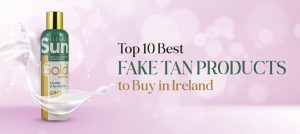Hair dye or hair coloring products can enhance the self-expression and confidence level of an individual. One with a sensitive scalp can face some significant issues related to the ingredients used in hair dye. Various types of hair dye products are available in the maket, among which many contain some ingredients that are harmful to a sensitive scalp.
Skin absorption rates vary greatly depending on the area of the body, with the scalp and forehead absorbing more than the forearms. A product’s components list should always be examined for any possible health dangers while using hair coloring.
People can minimize their exposure to hazardous substances and enhance their general well-being by making educated decisions based on product constituents and absorption rates.
Impacts Of Harsh Hair Dye Ingredients On Sensitive Scalps
Hair dye contains few chemicals that can be harsh to a sensitive scalp. It can trigger adverse reactions on a sensitive scalp. These adverse effects include inflammation in the scalp, itchiness and even damage to the scalp. The condition can get severe if the dye is used frequently. Hence, filtering the elements in a hair dye is required to keep the scalp healthy and well-maintained.
8 Ingredients To Avoid While Choosing A Hair Dye For A Sensitive Scalp
1. P-Phenylenediamine PPD
Sensitive scalp people may experience skin irritation and inflammation, known as dermatitis or eczema if exposed to a chemical like PPD. Para-phenylenediamine is referred to as PPD.
It is a petroleum-derived chemical that contains benzene, naphthalene, phenols, aniline, and other substances. It is used as a dye for dark color hues. Additionally, it works as a wood preservative; skin contact should be avoided.
2. Ammonia
Ammonia is a widely recognized hazardous component used in hair coloring products. Its potent and disagreeable odor stems from this. It is utilized in hair color because it enables the color to pierce the hair cuticle enables the color to pierce the hair cuticle, it is utilized in hair color. It may, however, frequently have adverse effects. Looking for an ammonia-free hair dye? Try our Herbal Time Coloring Hair Cream – 100% ammonia-free for a gentle, vibrant color transformation!
3. P-toluenediamine (PTD)
This chemical element is not only harmful to the person who has applied a hair dye, but also it can create allergic reactions all over and trigger adverse reactions in the scalp. This element is absorbed by the hair follicles during the dying process.
4. Quaternium-15
Make sure there is no quaternion-15 included in your hair dye by carefully reading the packaging. Numerous hair and cosmetic products contain this chemical as a preservative known to cause allergies. It produces a chemical element named formaldehyde, which in sensitive individuals may cause a contact dermatitis reaction.
5. Resorcinol
It is essential to take resorcinol seriously because it might affect not only your scalp but also your whole health. Due to its flammability, the potential for causing stomach aches when inhaled, and its tendency to create redness when skin contact, the chemical has been categorized as hazardous.
Resorcinol is not only known to trigger allergic reactions but is also a known hormone disruptor that might potentially impact your central nervous system and cause thyroid dysfunction.
6. Titanium dioxide
Although it’s not something to be overly concerned about, it’s still advisable to stay away from titanium dioxide, a mineral used as a pigment in hair coloring products. As with hair dyeing, it becomes a possible carcinogen when inhaled in large numbers, but it’s generally considered benign and frequently found in sunscreens.
7. Phthalates
Phthalates are one of the elements of hair dye that has a massive role in making plastic soft and flexible for human application. But one should not use this kind of element on their sensitive scalp. It is a type of endocrine disruptor that interrupts the action of the functionings of regular hormones. As the body absorbs these kinds of elements, one must avoid using them to prevent any harm to the scalp’s health and well-being.
8. Sodium Lauryl Sulfite (SLS)
This chemical has a significant role in cleaning the hair. This chemical is mainly found in detergents and washing powders. Using the same material to clean hair can affect the scalp. It not only cleans the hair but also removes the natural oils and essential elements from the hair and scalp. This activity makes the hair weak and prone to damage. Also, it can give rise to further skin irritations.
Conclusion
It’s crucial to prioritize scalp health in addition to trendy, colorful hair, especially for those with sensitive skin. People may take advantage of hair coloring benefits without endangering the health of their scalp by eschewing the hazardous substances frequently present in hair dye formulations and choosing safer, kinder alternatives. You are also browse our range of shampoos for sensitive scalp.
Always remember to read product labels carefully, do extensive research, and, if required, consult a specialist. Everyone can have a comfortable and joyful experience getting a gorgeous hair makeover with the correct information and proactive steps.
Shop hair care products from our online store.



